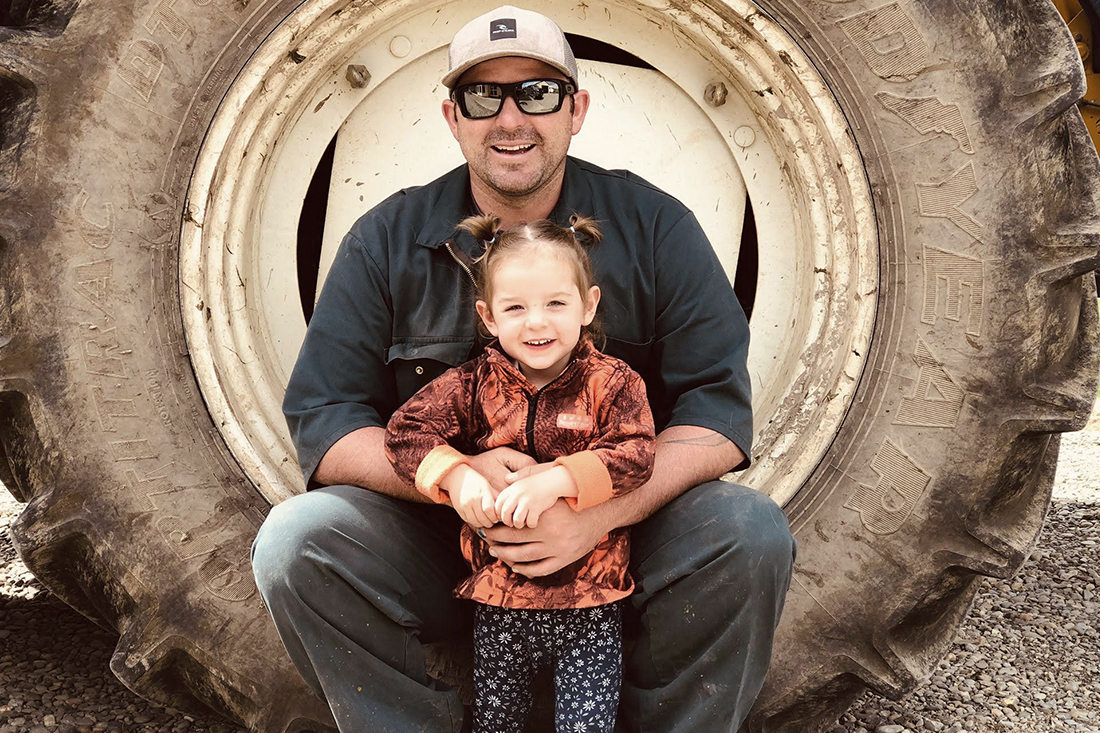Last season, across New Zealand dairy farmers achieved a 6-week in-calf rate of 69.3% – the highest on record, while the not-in-calf rate was the lowest on record at 15%. The test now is for the industry to maintain and improve upon these rates further.
Co-op farmers Cameron and Cassy Spencer say there is no single solution to achieving this goal. Rather it’s a culmination of changes over time. They should know – over the course of several years they increased their Southland farm’s 6-week in-calf rates from 67% to a whopping 80% and reduced not-in-calf rates from 13% to 8%.
“The year following, we achieved an 82% 6-week in-calf rate and not-in-calf rates dropped to 6%. It was a concerted effort over several years to achieve these results. We were ranked first out of 350 farms in Southland for our reproduction rates,” Cameron says.
Two seasons ago, Cameron, Cassy and their three daughters moved north to Marlborough where they share-milk 650 cows on a 242ha property that stretches 3.5km across hilly terrain. From a scale and operational perspective, this is a step up from the Southland farm where they share-milked 420 cows on 141ha of flat land.
“We’re now on a bigger and more complicated farm. Learning a new farm has its challenges and while we’ve seen improvements between our first and second mating on this farm, I don’t feel like we’re got to a point where things are as consistent yet as they were on the Southland farm – this takes time. We were in Southland for five years. But it definitely is possible,” Cameron says.
“Maintaining weight on cows is something we have to manage carefully as they are walking great distances to the milking shed. We do this by running a twice-a-day herd, and a ‘3in2’ herd all season right from calving, then the first herd joining them on the ‘3in2’ milking routine around December. During the times when the cows are on once-a-day milking we’ll have them walking further than when they’re on twice-a-day, so we can maximise production and use the farm without compromising cow health.”
Maintaining animal health is a key part of Cameron’s 6-week in-calf success to date.
“We were very consistent with our mineral monitoring on the Southland farm. We’re talking five years of blood testing to make sure we were getting the exact same results from what we were doing. The mineral applications stayed the same from calves through to the milking routine throughout the season. This ensured they were dried off in the right condition and that they calved in the right condition. On that farm the longest walk was 800 metres so there was very little stress on the cows. All those things put together created the perfect conditions for increasing 6-week in-calf rates.”
Cameron says in Southland they took a hybrid approach with both bulls and artificial insemination during mating.
“We started by identifying the non-cyclers and ran a second herd with Hereford bulls from day one. They would also be inseminated artificially. We changed our focus from looking at replacement cows to just getting all our herd in-calf, reducing our calving spread and minimising late calvers. After three weeks our submission rate was up around 90%. Then we decided to look at the whole herd and started putting the bottom 10% of cows in with the non-cyclers and then the late calvers,” Cameron says.
They are applying this approach with their larger scale on the new farm in Marlborough. Part of the farm’s animal health regime is to have external foot trimmers come in twice a year in a bid to minimise lameness among the herd.
“I think we’d have more lame cows if we didn’t do it. Unfortunately there isn’t a dedicated trimmer in Marlborough, which is why we only get him in twice a year – we’re trying to get a few more farms on board to make it worth his while to come up more often. If we had someone local I’d probably institute monthly hoof trimming. The cows need it,” Cameron says.
“Obviously, with the increased distances and terrain our cows are burning more energy than they were in Southland. We’re not miles away from where I think we should be in terms of reproduction rates. I’m realistic that I don’t believe we’ll get the same results here that we did in Southland but, as the herd improves, I think we might get close.”
Talk to your Co-op Services Area Manager to find out more about improving your 6-week in-calf rate or visit a Farm Source store.

